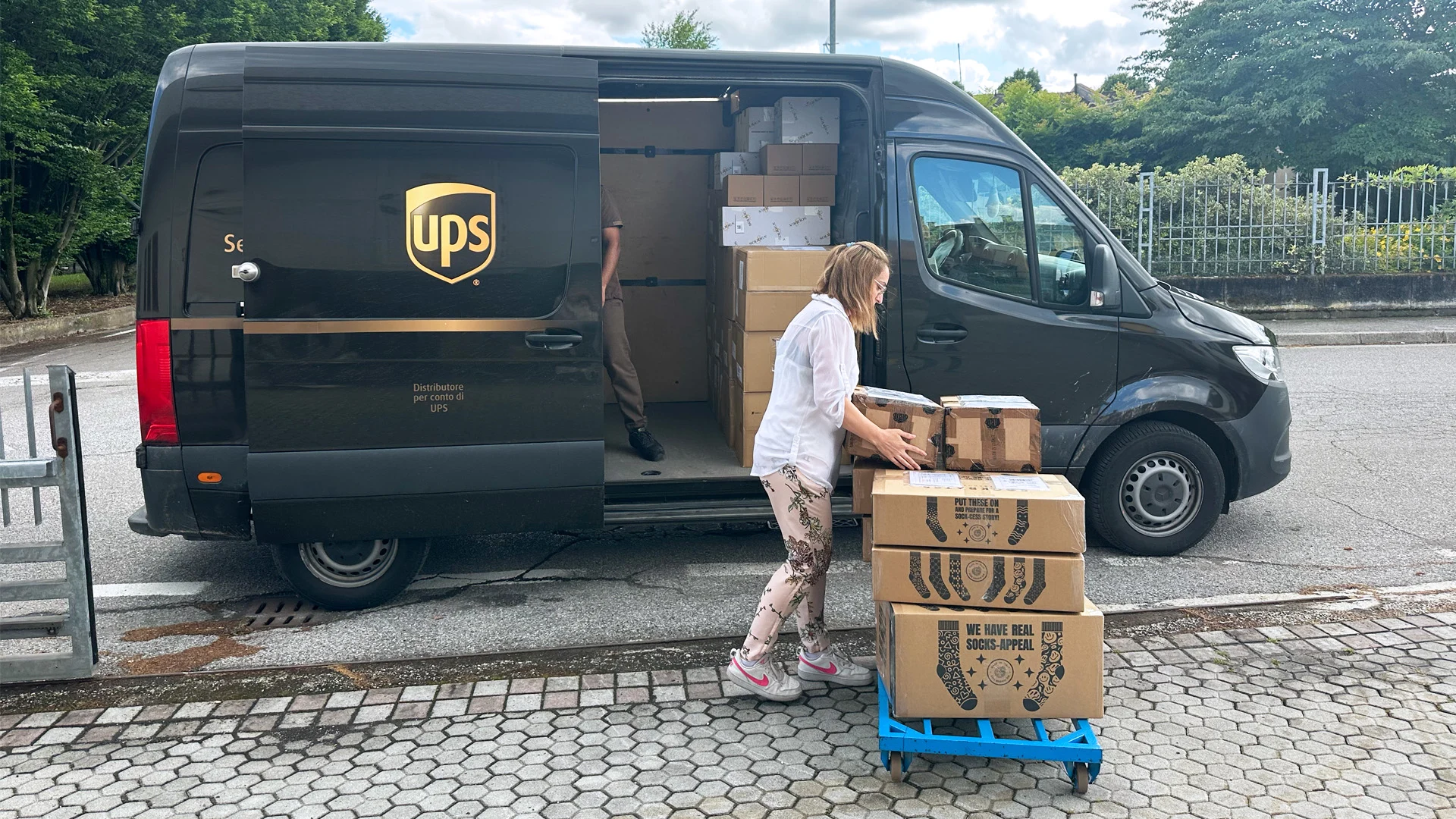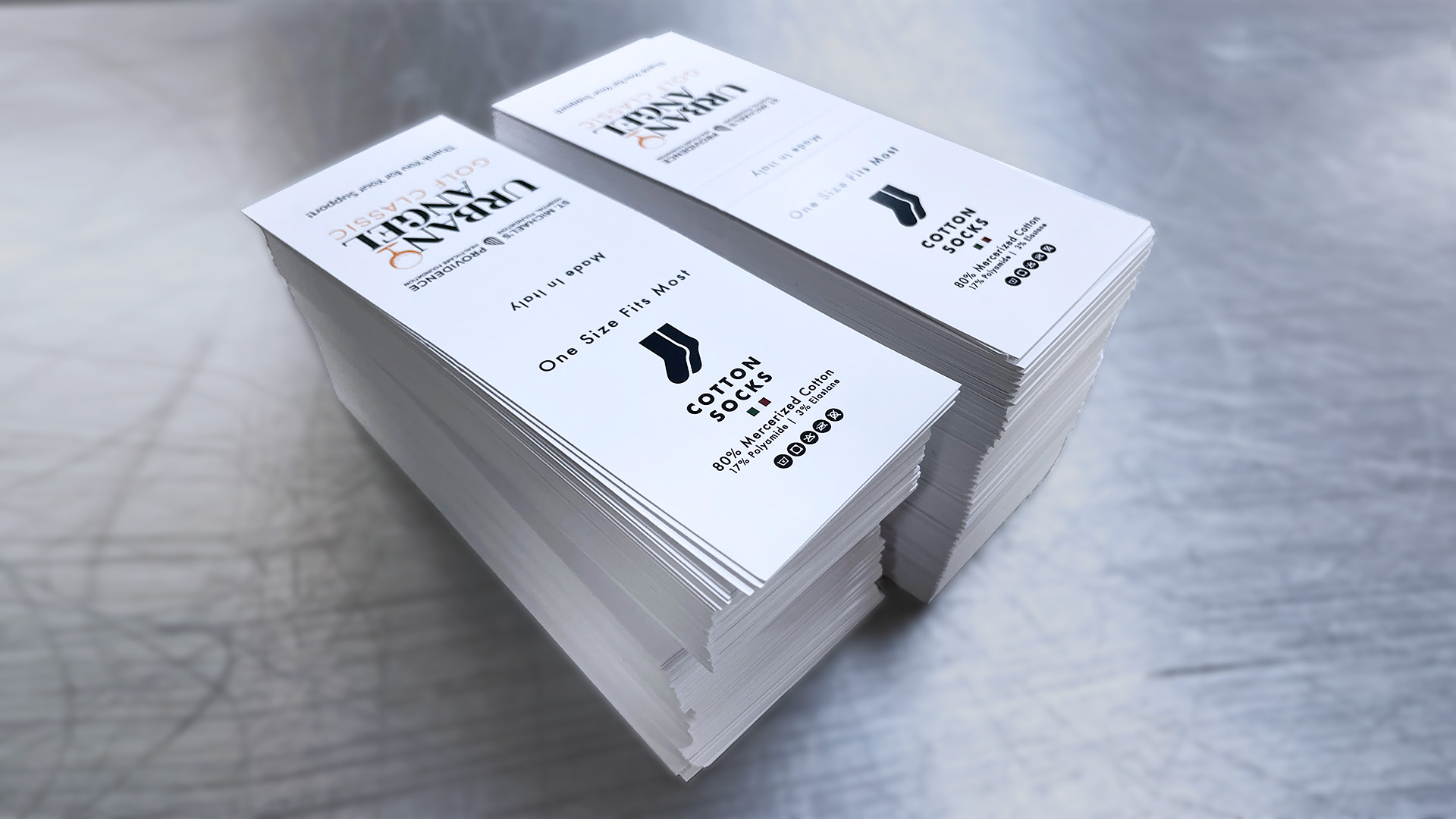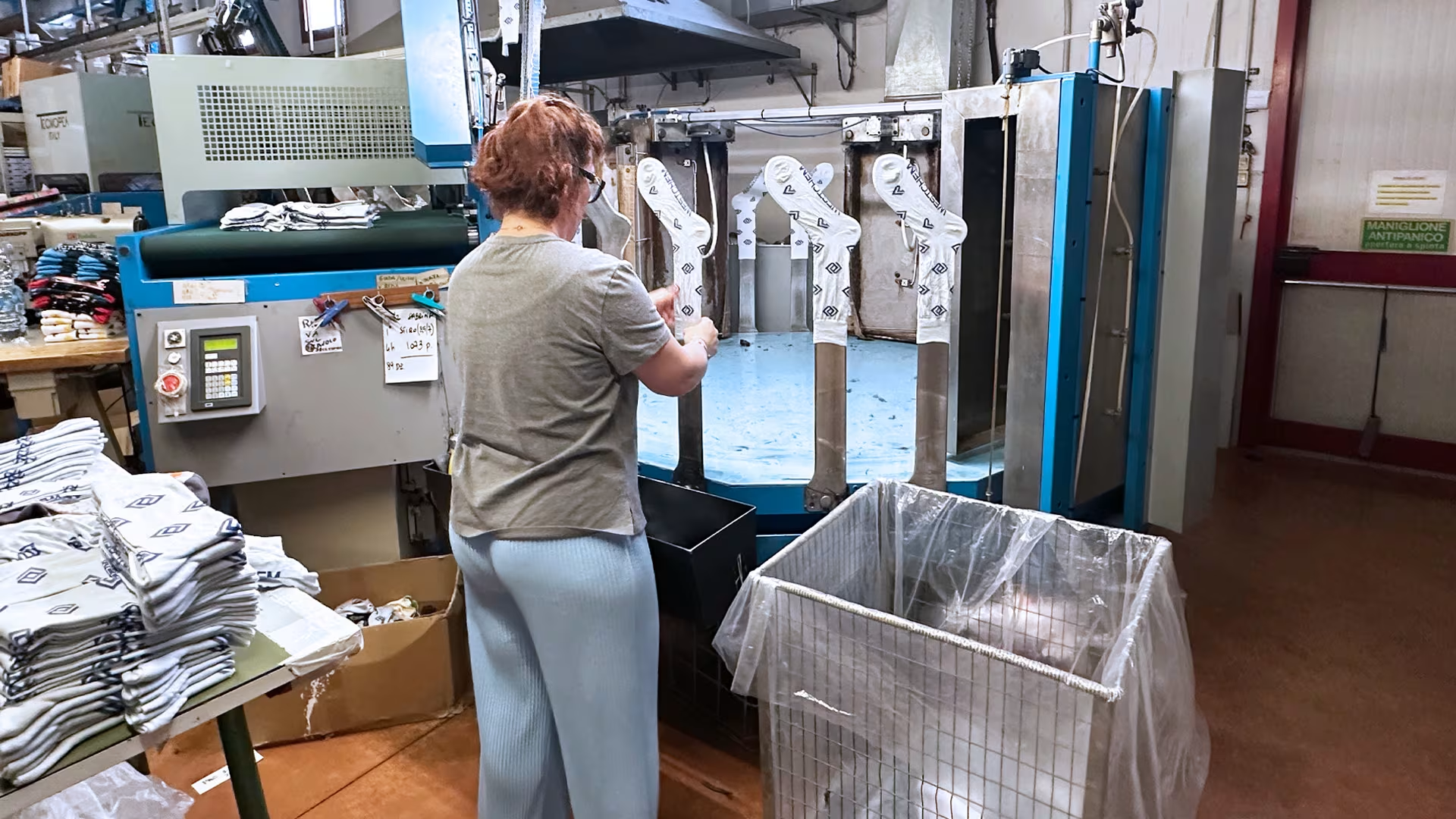The Evolution of Swag: From Slang to Marketing Campaign
The journey of ‘swag’ from a slang term to a marketing tactic for distributing free stuff has been remarkable.
Today, it plays a significant role in the marketing world, with companies using branded swag on items and promotional products, such as:
- USB drives
- Drinkware
- Jackets
- Pens
- Custom socks
Brands use swag to give away free stuff at trade shows and events hoping to achieve some form of marketing ROI.
From its origins in Scandinavia to the Jay-Z popularized term, swag now encompasses a wide range of advertising and promotional products used by companies to establish meaningful connections with potential customers, employees, and vendors.
But the influence of swag in marketing goes beyond brand identification. It drives sales, breaks into new markets, and fosters a sense of engagement and loyalty among clients and stakeholders.
As technology advances and consumers become more environmentally conscious, swag has also adapted to these trends, with tech-focused items and eco-friendly branded products like organic custom socks gaining popularity.
The Origin and Meaning of Swag
Originating from Scandinavia, the term ‘swag’ has developed various interpretations and has two meanings depending on the context used.
In the past, the word swag had a specific definition. It was used to describe a curtain or fabric that hung in an arc-like shape and drooped down.
In its modern definition, and the way todays generation use the term, the word swag refers to personal style or confidence, also referred to as ‘swagger’. More on this in the next section.
In the marketing world, the word ‘swag’ stands for “stuff we all get” and refers to branded products or apparel that companies distribute for free to engage with clients, employees, or attendees at events.
Swag in Popular Culture
The popularity of the word swag in modern culture has been greatly influenced by artists like Jay-Z, who claim to have invented the modern use of the term over a decade ago.
This has led to swag becoming a highly desirable and sought-after commodity, further enhancing modern the definition of swag and its effectiveness as a marketing tool.
The popularity of swag and swagger among celebrities and influencers has made it more than just a promotional product and item – it’s now a symbol of coolness and style.
SWAG: Breaking Down the Business Acronym

The acronym swag stands for ‘Stuff We All Get’ and represents promotional items companies distribute to promote their products or brand.
Branded apparel, such as custom T-shirts or customized socks, is a common type of swag that serves as a physical reminder of a company’s brand and helps build loyalty among recipients.
The word ‘swag’ is basically a synonymous term for promotional items and swag recipients often feel valued and appreciated, which can lead to increased brand awareness, recognition, and customer loyalty or retention.
This promotional merchandise, often adorned with the company’s logo, include souvenirs, wearables, and other gifts that serve as a constant reminder of the brand.
Distributing swag basically lets you live in your target audience’s mind rent-free (if the swag is good!).
SWAG vs Merch
While both SWAG and merch serve as promotional products, they differ in their distribution, price, and purpose.
SWAG is typically distributed as free giveaways at events like trade shows, conferences, or as gifts to clients and employees, while merch is sold to fans or customers who want to support and represent their favorite brands or artists.
Despite the difference in distribution, both SWAG and merch share a common goal of promoting a brand, driving sales, fostering loyalty, and creating a sense of belonging among their respective recipients.
Some common merch products include souvenirs, wearables and gifts, but the options are endless.
The Power of SWAG in Marketing
‘SWAG’ serves as a formidable marketing tool with significant influences on brand awareness and brand recognition.
This power of SWAG products can benefit all types of companies ranging from something as niche as fleet maintenance management software to more common industries like mens designer clothes or insurance.
By providing potential customers at an event with a physical reminder of your company’s brand, swag can create a lasting impression and increase the likelihood of future sales.
Not only that, swag giveaways can also serve as:
- Conversation starters at networking events or trade shows
- Tools to build connections with potential clients or partners
- A way to set the stage for long-term relationships
Just to name a few.
Maximizing ROI of Company Swag

When used effectively, company swag can significantly boost brand visibility and revenue, create lasting impressions, and strengthen relationships between clients, employees, and vendors.
The key to unleashing the potential of branded swag lies in understanding its purpose, selecting the right swag products, and distributing them strategically to maximize impact and ROI.
From logo-sublimated T-shirts to custom USB drives, company swag can take many forms, and its impact can vary depending on the target audience, the quality of the items, and the context in which they are distributed.
We are strong believers in using custom socks as tradeshow giveaways and overall swag because of their real tangible value and practicality (everyone needs socks!), and because it has a large canvas to display your brand in a great and unique way.
Swag Campaign Marketing KPIs
Keeping track of and assessing the success of your swag campaign KPIs is crucial to guarantee a favorable ROI and amplify the influence of your promotional products.
Here are some of the most important marketing KPIs to track in your swag campaign:
- Cost Per Acquisition (CPA): The cost of acquiring a new customer. It helps in understanding the monetary value of each SWAG item in relation to gaining a new customer.
- Return on Investment (ROI): This KPI measures the profit or loss generated on a marketing campaign relative to the amount of money spent. It’s vital to ensure you’re getting value from the campaign.
- Brand Recall: This measures the percentage of participants who can recall your brand after a certain period. For SWAG campaigns, you’d want people to remember your brand after receiving your giveaways.
- Engagement Rate: On any social media mentions or hashtags associated with your SWAG, this KPI will measure likes, shares, and comments.
- Redemption Rate: If your SWAG includes coupons or promotional codes, this KPI measures how many were actually redeemed.
- Lead Generation: Number of potential customers (leads) that showed interest in your product/service after receiving the SWAG.
- Customer Lifetime Value (CLTV): For acquired customers, this predicts the net profit attributed to the entire future relationship with a customer. It’s a longer-term KPI to understand the true value of acquiring a customer through the SWAG campaign.
- Net Promoter Score (NPS): Post-event, ask attendees a simple question: “On a scale of 0-10, how likely are you to recommend our brand to a friend or colleague?” This gauges customer satisfaction and potential for word-of-mouth referrals.
- SWAG Reshares and Mentions: Track how many times your branded merchandise is mentioned, shared, or featured on social media platforms. This gives insight into its popularity and reach.
- Inventory Leftovers: The amount of SWAG items not distributed can provide insights into the overestimation of demand or potential issues with the items’ attractiveness.
- Feedback and Reviews: Direct feedback from recipients on the quality, relevance, and utility of the SWAG can guide future campaigns.
- Incremental Sales: For businesses with a sales component, measure if there’s an uptick in revenue post SWAG distribution, possibly indicating its success in creating awareness or interest.
Boosting Brand Visibility
Branded swag increases brand visibility by providing a physical reminder of the company to potential clients, serving as a walking advertisement for your company. This helps build brand awareness and establishes mental recognition and loyalty among your target audience.
As a result, swag can increase the likelihood of future sales, and pave the way for long-term relationships with clients, employees, and vendors.
Creating Lasting Impressions
By using swag that reflects the company’s values and appeals to different meanings of the target audience, companies can ensure their promotional products (with brand logo) leave a lasting impression on recipients and foster a sense of loyalty and appreciation.
Swag can be used not only to make money but to reward customers for their loyalty or to thank employees for their hard work – both of which leave a lasting impression.
Strengthening Relationships
Does company swag help strengthen relationships with customers, team members, and vendors by showing appreciation and fostering goodwill? You bet it does.
By gifting promotional items and souvenirs that they find useful and appealing, companies can drive brand awareness and promote long-term strategic business relationships.
Tips for a Successful Swag Campaign

Running a successfully branded swag campaign requires clear objectives, the right mix of swag prizes or freebies, and a strategy to maximize the ROI.
By identifying the target audience, and selecting items that resonate with recipients, businesses can develop a swag campaign that maximizes results in great ways. Don’t always go for the cheap swag options. Instead, opt for what your target audience will truly appreciate.
Setting Your Objectives
Identifying marketing goals and target audience is the first step in determining the swag budget and types of promotional products you need.
By setting clear objectives, businesses can ensure that their marketing campaign is tailored to their specific needs and resonates with the intended swag recipients.
For example, you could distribute swag with your contact details to encourage lead acquisition.
Choosing the Right Swag Items
Choosing swag items based on the budget and target audience is key to a successful swag campaign. Factors such as usefulness, quality, and appeal should be considered when choosing promotional products, ensuring that they resonate with recipients and effectively promote the company’s brand.
By selecting the right swag items, businesses can develop a promotional campaign that leaves a lasting impression and strengthens relationships with clients, employees, and vendors.
Bonus tip – Use products that have your contact details for lead generation
Swag in the Digital Age: Trends and Innovations

As technology advances and consumer preferences change, swag trends have evolved to reflect these shifts.
Tech-focused items like gadgets and accessories are becoming increasingly popular at events, while eco-friendly products demonstrate a company’s commitment to sustainability.
These trends cater to contemporary consumers and assist businesses in distinguishing themselves from competitors, leaving a lasting impression on recipients.
In addition to tech swag and eco-friendly products, experiential swag like digital gift cards and access to exclusive online content or events is gaining traction in the digital age.
By staying current with swag trends and innovations, businesses can develop promotional campaigns that resonate with their target audience and drive brand awareness, loyalty, and long-term relationships.
Tech Swag: Appealing to the Modern Consumer
Tech swag, such as branded gadgets and accessories, can attract and engage the tech-savvy consumer who values personalized and innovative promotional products.
Companies can meet the preferences of today’s consumers and enhance brand awareness while making lasting impressions by providing tech swag like:
- customized phone covers
- branded USB drives
- smartwatches
- virtual reality headsets
Going Green with Eco-Friendly Swag
Eco-friendly swag options, like reusable bags and organic cotton products, demonstrate a company’s commitment to sustainability and help reduce its environmental impact.
Businesses can demonstrate their commitment to sustainable practices, establish a favorable impression on their customers, differentiate themselves from competitors, and cultivate loyalty by choosing eco-friendly swag. A sustainable company could use eco-friendly swag like:
- Reusable tote bags
- Recycles material pens
- Reusable water bottles
- Organic cotton dress socks
-
Cool Marketing SWAG Example: Custom Socks

Serving as a unique and creative example of promotional swag, custom socks could be the ultimate secret swag weapon with unlimited design ideas.
They are great examples of the power of swag in marketing, as businesses can use personalised socks to increase brand visibility, have lasting impressions, and strengthen business relationships in many ways.
Quality custom sock gifts are a great way to drive traffic to your booth, start a conversation, and appreciate your employees.
Depending on the volume, custom socks can be cheap and cool swag products that can be personalized with a company’s logo, slogan, or other design ideas, making them an ideal choice for companies looking to stand out from the competition. We have a lot of experience witnessing this ourselves.
Using quality custom socks as promotional items provides a unique and memorable experience for customers, employees and stakeholders across the board.
Summary
In conclusion, the evolution of swag from slang to marketing terminology has revolutionized branding strategies and created new opportunities for businesses to connect with their target audience.
By understanding the power of swag, staying current with marketing trends, ideas and innovations, and using promotional items like giveaways, apparel and custom socks, companies can boost brand visibility, create lasting impressions, and strengthen business relationships.
So, why not unleash the potential of swag in your marketing efforts and leave a lasting impression on your clients, employees, and vendors?
Reach out to us today and get started with your own high-quality branded custom socks!
Frequently Asked Questions
What did SWAG stand for in the 60s?
SWAG in the 60s was an acronym meaning ‘Scientific Wild Guess’, a term used among military officials.
This term was used to describe a guess that was based on scientific evidence and data, rather than a guess made without any evidence.
It was a way to make sure that decisions were made with the best available
Do people still say “SWAG”?
Although “swag” has been out of fashion since 2012, some still use swagger to describe someone who is cool and enviable, as opposed to describe free stuff or giveaways.
It is often used to describe someone who is fashionable, stylish, and confident.
They may have an air of sophisticated stylish confidence and a certain level of success that others admire.
What does swag mean among teenagers?
SWAG referrs to someone who displays an overly confident attitude.
It’s often used by teens when talking about displaying confidence and coolness.
Does company swag help in marketing?
Swag is a great way to promote your business, as it increases recognition of your brand and helps build customer loyalty. It also provides tangible reminders of your brand, making it an effective marketing tactic.
What are some popular swag trends in the digital age?
Some popular swag trends include tech-focused items for giveaways and eco-friendly products like custom organic socks.














